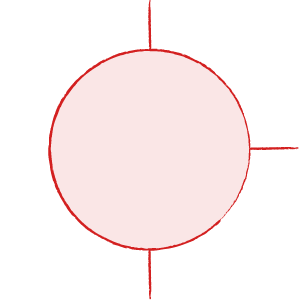Concept maps
A concept map is a way of sequencing, ordering or breaking down information into its constituent parts. It helps you to work out how a topic is put together and what areas you need to think about in order to analyse the topic.
Use the tabs to move between the concept maps.
Study the concept maps and explanations by selecting each of the buttons.
The concept of law


Explanation of concept map 1 - the concept of law
1. Definition
Law is a set of rules which aims to control people's behaviour.
2. Legal versus non legal
Rules may be legal or non legal
Legal
Legal rules can be enforced by authorities of the State such as the Australian Consumer & Competition Commission (ACCC) which investigates matters arising from the Australian Consumer Law (ACL).
Non legal
Non legal rules apply to a particular group only and are generally only enforceable within that group, eg the Australian Football League (AFL) Tribunal.
3. Criminal Law
Criminal law involves the regulation of behaviour which is considered to harm not only an individual victim but also has the potential to harm the whole of society. The person who commits the harm is known as the accused or defendant.
For example, if you kill another human being without reason, you clearly hurt the victim but also the social fabric of society. Action is then taken against you (the defendant) by the police and the courts on behalf of the rest of the community.
4. Civil Law
Civil law involves private individuals who believe their personal rights have been wronged. The person who has been wronged (plaintiff) may sue (claim compensation/remedy) from the person who harmed them (defendant).
Study the concept maps and explanations by selecting each of the buttons.
The common law system


Explanation of concept map 2 - the common law system
1. Historical Background
Australia's legal system is called a Common Law System for the following reasons:
- it was brought to us by the British
- it is based upon the idea of applying common legal principles to similar cases.
2. Precedent
Precedent refers to a 'previous decision' of a court. Courts are bound (must) to follow decisions of other courts when the facts are the same in certain cases.
3. Ratio-Decidendi
Ratio-Decidendi means the 'reason for a decision'. Courts must look closely at previous judgements to find why a decision was made. Future cases may be bound by a ratio-decidendi of a previous case.
4. Obiter Dictum
Obiter Dictum refers to opinions and observations made in a judgement which are not part of the ratio-decidendi. They may be interesting comments made by a judge / justice which highlight certain issues that are not necessarily part of their reasons for deciding a case the way they do. For example a comment may be made at the end of a judgement where it is stated that more changes to the law are needed to be made by parliament.
5. Court Hierarchy
A court hierarchy is like a ladder of courts with the lowest or inferior court at the bottom, while the superior court sits at the top. The court hierarchy of each state is considered to be separate. However, as laws are made by both state and federal governments, and as a result of the constitution, there are both state and federal courts. The highest court in Australia is the High Court of Australia. It usually hears only appeals. Original cases that go to the High Court are disputes regarding the constitution.
6. Binding Precedent
Lower courts in the same hierarchy must follow the decisions of higher courts in the same hierarchy when the facts of the case are similar.
7. Persuasive Precedent
Sometimes even though the facts of a case may be similar, courts in different hierarchies (that is in different Australian states or countries) don't arrive at the same decision, although the previous decision may be referred to.
Study the concept maps and explanations by selecting each of the buttons.
Dispute resolution


Explanation of concept map 3 - dispute resolution
1. Litigation - court hierarchy
When a civil case needs to be resolved through the courts, the process is called litigation. Litigation has been the traditional method of resolving disputes in Australia. Before a case is taken to court, the jurisdiction of the court must be considered, that is, different courts specialise in different areas and have different powers. Refer to the powers of the courts listed in the workbook.
2. Alternative Dispute Resolution
Alternative dispute resolution refers to bodies outside the court system which can also be used to resolve legal disputes such as tribunals and the Dispute Settlement Centre of Victoria (DSCV). Sometimes the decisions made may be legally binding as in tribunals and others may not as in the DSCV.
Study the concept maps and explanations by selecting each of the buttons.
Statute law


Explanation of concept map 4 - statute law
1. Federation
Australia is a federation - a union of states who have their own powers of law making, as well as a national parliament which makes laws on behalf of the whole country.
2. Constitution
The Commonwealth of Australia Constitution Act 1901 is a law which created the Federal system of government.
The constitution divides the powers of law making between the State and federal Parliaments. This means that each parliament is allowed to make laws in areas granted to them by the Constitution. The powers are divided as follows:
- State – residual powers, eg education
- Federal – exclusive powers, eg military
- Concurrent – shared powers between state and federal parliament, eg taxation (see S109).
The only way to change the words of the constitution and create new areas of power for one or the other parliaments is through a referendum. A process by which Australian voters must vote Yes or No to the change.
If there are conflicts between the State and Federal Parliaments the High Court of Australia can interpret the words of the Constitution and make a decision in favour of one or the other Parliaments. In this way an area such as the environment which may have been a residual power could be given over to the Federal Parliament if the High Court decides it is to be so. (Refer to the Franklin Dam Case.)
3. Parliament
The Australian system of parliament is based on the Westminster system of England. Parliament is made up of elected representatives who make laws to govern the state (state parliament) or the whole of the country (federal parliament)
Each parliament in Australia is bi-cameral except for Queensland, that is the parliament is made up of 2 chambers (houses) in which proposals for new laws (bills) are debated and passed. The lower house, the House of Representatives, is where the government is represented and the upper house, the Senate, is where members from the government and other political parties reside whose main job is to review proposals for new laws.
